The Brazos Review: AMD's E-350 Supplants ION for mini-ITX
by Anand Lal Shimpi on January 27, 2011 6:08 PM ESTAMD has been curiously absent from the value netbook and nettop segments since Atom’s arrival nearly three years ago. These markets are highly profitable only for component vendors, as the OEMs that sell netbooks and nettops must survive on very slim margins in order to hit aggressive price points. It wasn’t too long ago that we were shocked by $699 desktop PCs, but to now be able to get a fully functioning portable PC with display at below $300 is impressive. In order for the profit equation to work out however, you can’t simply scale down a larger chip - you need an architecture targeted specifically at the type of very light workloads you expect to encounter in these segments. Underclocking and undervolting an architecture targeted at high end desktops or servers won’t cut it.
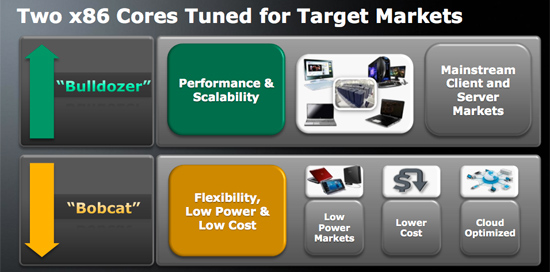
Generally a single microprocessor architecture can cover an order of magnitude of power envelopes. You can take an architecture from 10W - 100W using clock speed, voltage scaling and disabling features (e.g. cutting cache sizes). You can’t efficiently take a 100W architecture and scale it down to 1W. Intel realized this with Atom, and what resulted was a new architecture designed to span the 0.5W - 5W range. Given the constraints of the process (Atom was built at 45nm) and a desire to keep die size down to a minimum (and thus maximize profits), Intel went with a dual-issue in-order architecture reminiscent of the old Pentium - but with a modern twist.
AMD came to the same realization. For it to compete in these value markets, AMD couldn’t rely on its existing Phenom II derived architectures. The Phenom II and its relatives currently span a range of TDPs from 9W to 140W, and at the lower end of that spectrum we’re talking about some very low clock speeds and performance targets. Getting down to 1W was out of the question without a separate design.
What AMD came up with was a core called Bobcat, initially targeted for netbooks, notebooks, nettops and entry level desktops. Architecturally Bobcat is a significant step ahead of Atom: while still dual-issue, it features an out-of-order execution engine making it the Pentium Pro to Atom’s Pentium.
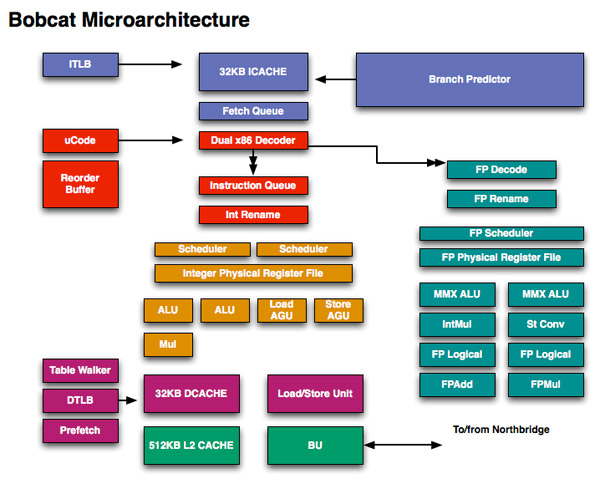
It isn’t just CPU architecture that AMD surpassed Atom with, the first incarnation of Bobcat is an integrated SoC with on-die DirectX 11 GPU. AMD calls this combination a Fusion APU (Accelerated Processing Unit) as it places both a CPU and GPU on a single die. The possible CPU/GPU combinations for Bobcat based APUs are listed in the table below:
| AMD Brazos Lineup | ||||||||
| APU Model | Number of Bobcat Cores | CPU Clock Speed | GPU | Number of GPU Cores | GPU Clock Speed | TDP | ||
| AMD E-350 | 2 | 1.6GHz | Radeon HD 6310 | 80 | 500MHz | 18W | ||
| AMD E-240 | 1 | 1.5GHz | Radeon HD 6310 | 80 | 500MHz | 18W | ||
| AMD C-50 | 2 | 1.0GHz | Radeon HD 6250 | 80 | 280MHz | 9W | ||
| AMD C-30 | 1 | 1.2GHz | Radeon HD 6250 | 80 | 280MHz | 9W | ||
AMD avoided branding its first APUs, they’re simply the AMD E-series and C-series Fusion APUs. The emphasis isn’t on the CPU or the GPU in this case, just the company name and a model number.
| CPU Specification Comparison | ||||||||
| CPU | Manufacturing Process | Cores | Transistor Count | Die Size | ||||
| AMD Zacate | 40nm | 2 | ? | 75 mm2 | ||||
| AMD Thuban 6C | 45nm | 6 | 904M | 346mm2 | ||||
| AMD Deneb 4C | 45nm | 4 | 758M | 258mm2 | ||||
| Intel Gulftown 6C | 32nm | 6 | 1.17B | 240mm2 | ||||
| Intel Nehalem/Bloomfield 4C | 45nm | 4 | 731M | 263mm2 | ||||
| Intel Sandy Bridge 4C | 32nm | 4 | 995M | 216mm2 | ||||
| Intel Lynnfield 4C | 45nm | 4 | 774M | 296mm2 | ||||
| Intel Clarkdale 2C | 32nm | 2 | 384M | 81mm2 | ||||
| Intel Sandy Bridge 2C (GT1) | 32nm | 2 | 504M | 131mm2 | ||||
| Intel Sandy Bridge 2C (GT2) | 32nm | 2 | 624M | 149mm2 | ||||
These APUs do need the aid of an additional chip - the Hudson Fusion Controller Hub (FCH). The FCH adds support for things like SATA, USB, Ethernet and Audio.The Hudson FCH is very tiny measuring approximately 4mm x 7mm for a total die size of around 28mm2.
The combination of these Bobcat based APUs and the FCH is called the Brazos platform.
Late last year AMD invited me to spend several hours with a Brazos system at its brand new campus in Austin, TX. While the preview gave us some insight into what we could expect from Brazos, I didn’t have enough time to really dive in as much as I would’ve liked to.
Earlier this month, AMD officially launched Brazos with hardware expected sometime this quarter. For the past couple of weeks I’ve been testing a Brazos mini-ITX motherboard from MSI and today, it’s time to break the silence and share the results. They are quite good.


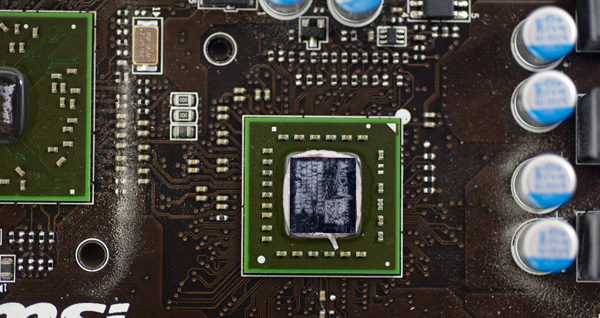
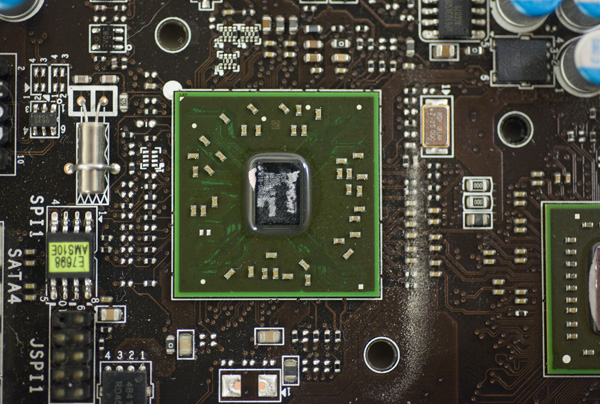
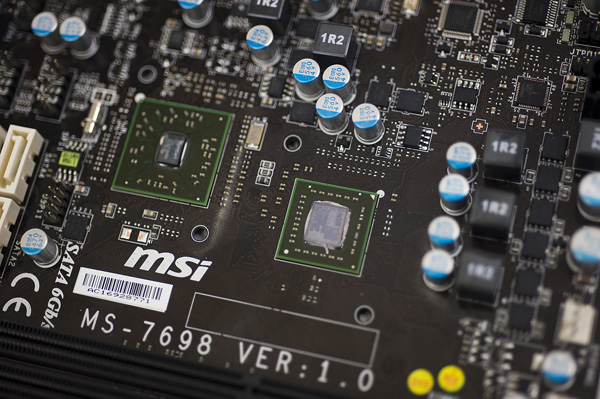
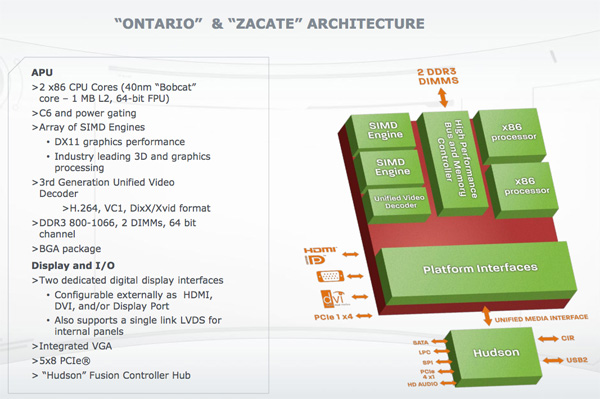








176 Comments
View All Comments
Stuka87 - Thursday, January 27, 2011 - link
I am happy that the Brazos has turned out to be as good as I hoped it was going to be.And its awesome to see AMD hand it to Intel in something :)
sprockkets - Thursday, January 27, 2011 - link
obvious troll, is a dumbasszodiacfml - Thursday, January 27, 2011 - link
Way back, AMD not making an Atom is a painful decision, I think they had Brazos on plans.Anyways, what a very nice piece of kit. I have a dual core atom desktop that has unusable 1080 video playback.
This is the HTPC to get, simple, small, low power, and cheap.
Regarding power supply, I have a question of design.
If notebooks and netbooks can get by a DC power adapter, can mini-itx boards use one especially now that many replacement power adapters are available. This is a problem with my atom system since it uses a standard 300w power supply which is inefficient and huge (standard case).
cyrusfox - Friday, January 28, 2011 - link
About PSU, yes many low power designs are out there. Just check out PicoPSUhttp://www.mini-box.com/s.nl/sc.8/category.13/.f
Some premium boards come with the power supply onboard. I hope to see a brazos board come along with the same feature. I would imagine that the cheap 20 pin pico PSU will work fine on these new brazos boards as the draw is so low (will that work Anand, a 20 pin connecter in place of the 24pin connector on this board?) Great thing about these PSU is they are silent(no fans) and very efficient( I have heard 96%). But that isn't counting the conversion lost from AC to DC. You need an AC adapter to go with these supplies, but the AC adapter does not need to output the same amount of watts as the picoPSU. Definitely a solution you should look into.
zodiacfml - Sunday, January 30, 2011 - link
cyrusfox, thanks for the link!msroadkill612 - Friday, February 4, 2011 - link
yeah - me too - have been looking for this for agesam also curious about 20 pin thing - my guess is u may have to pass on a pciE card. - any one know?
Metaluna - Monday, January 31, 2011 - link
There's also the Antec ISK 100 case that has a Pico-like PSU built in:http://www.newegg.com/Product/Product.aspx?Item=N8...
strikeback03 - Friday, January 28, 2011 - link
In my carputer the one problem I found was that while a PicoPSU might overall put out enough power to run a board, individual rails might have issues. I was using an Atom330 board and the PSU slowly died, had plenty of 12V power available but findings on the forums indicated that the board overdrew the 5V rail.msroadkill612 - Friday, February 4, 2011 - link
thanks for the heads upnlr_2000 - Thursday, January 27, 2011 - link
Brazos does "very again well" against Atom on absolute performance, die size and price.Thank you for the review